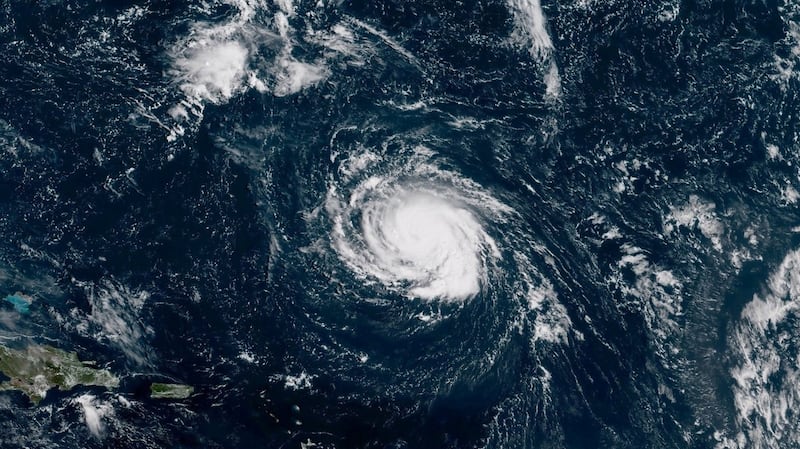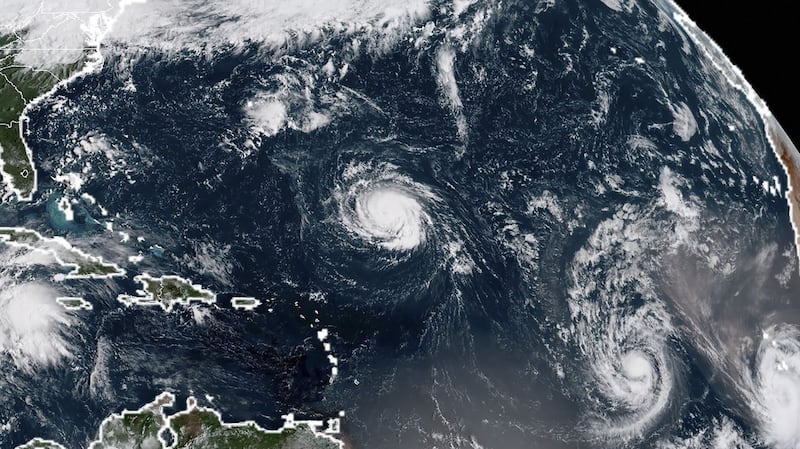Category 1 hurricane Florence gained strength on Sunday in the central Atlantic and is expected to turn into a major storm by Monday night as it churns over the open ocean and heads towards the US east coast, the US hurricane agency said.
Landfall is expected in the Carolinas later this week, said the US National Hurricane Center (NHC).
Florence was about 1,100km (685 miles) southeast of Bermuda as of 4am Irish time on Monday, packing maximum sustained winds of 150 km/h (90 miles per hour), the Miami-based forecasters said. The hurricane could make landfall possibly as a Category 3 or higher on the five-step Saffir-Simpson scale.
Florence was expected to approach the southeastern coast of the United States on Thursday, possibly near the North Carolina-South Carolina border, according to maps of the storm's trajectory predicted by the NHC.

Storm-force winds could begin buffeting the Carolina coast by Wednesday night, the NHC said.
“Make your plans now,” South Carolina governor Henry McMaster urged residents during a news conference on Sunday. “Presume that a major hurricane is going to hit right smack dab in the middle of South Carolina.”
Mr McMaster said he had asked president Donald Trump to declare a federal emergency in South Carolina in anticipation of the storm's arrival.
North Carolina
Residents as far north as Virginia were warned that Florence posed an increasing risk of generating a life-threatening coastal storm surge, as well as flooding from heavy rainfall should the slow-moving storm stall over the southeast.
North Carolina governor Roy Cooper also urged his state’s residents to get ready, noting the storm already was generating swelling waves and dangerous currents along the coast.
“Everyone in North Carolina needs to keep a close eye on Florence and take steps now to get ready for impacts later this week,” Mr Cooper said in a statement on Sunday.
The governors of Virginia, North Carolina and South Carolina have all declared states of emergency.
The storm's center was on track to pass between Bermuda and the Bahamas on Wednesday, the NHC said.

The NHC was also tracking two other storms farther out in the Atlantic.
Isaac, previously a tropical storm, strengthened to become the fifth hurricane of the 2018 Atlantic season, the NHC said.
Isaac was about 2,100 km (1,305 miles) east of the Windward Islands on Sunday with maximum sustained winds of 120 km/h (75 mph), the NHC said.
Hurricane Helene, was spinning in the Atlantic off West Africa's Cabo Verde Islands with 140kph (85mph) winds on Sunday, but did not appear to pose an immediate threat to land.–Reuters















